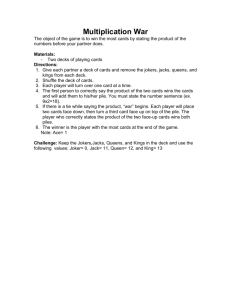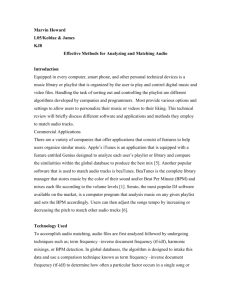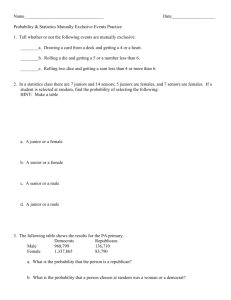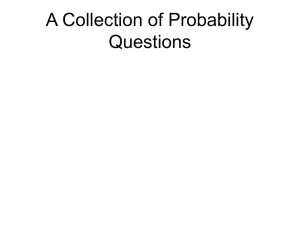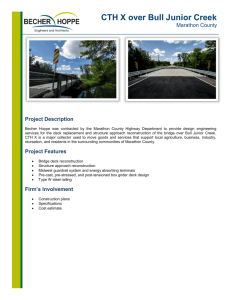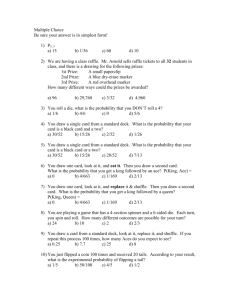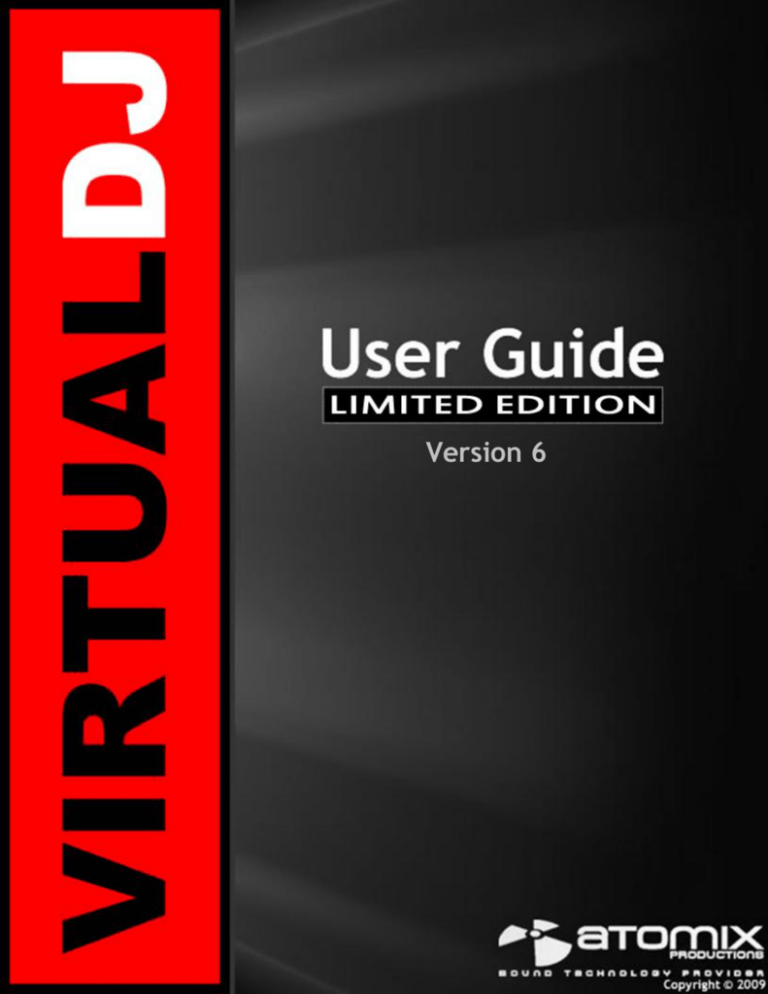
Version 6
INTRODUCTION
Welcome to the VirtualDJ Limited Edition (LE) software. The Limited Edition version of
VirtualDJ is built for distribution with Original Equipment Manufacturer (OEM) products.
The LE version is intended to provide you with the necessary capability, features, and
functionality for using your hardware to its full potential based on the manufacturer‘s design
recommendations. The LE software will provide you the best out-of-box and least amount of
configuration requirements for you to being to use and learn about your new hardware and the
software.
As part of the LE version, we invite you to take a 20-day trial run of VirtualDJ Professional –
select the Config button (found in the upper right area of the software interface) and from the
displayed page, click the ―Try 20-days PRO version‖ button.
On behalf of Atomix Productions and your hardware manufacturer, we hope you enjoy your
controller and the VirtualDJ software.
TABLE OF CONTENTS
INTERFACES – ZONES
BROWSER
FILE SYSTEM / FOLDER STRUCTURE
VIRTUAL FOLDERS
FILE / SEARCH RESULTS
AUDIO AND VIDEO TAG SUPPORT
SEARCHING
TRACK OPTIONS
BPM ANALYSIS AND KEY DETECTION
COMPUTER BEAT GRID (CBG) AND MANUAL BPM CORRECTION
DECK CONTROLS
INTERNAL MIXER CONTROLS
TOOLBAR CONTROLS
RHYTHM WINDOW
SAMPLER
EFFECTS (AUDIO)
VIDEO (FEATURES,TRANSITIONS, EFFECTS)
KARAOKE
RECORDING
4
5
5
5
6
7
8
10
10
10
11
14
15
16
17
19
20
22
22
LEGAL INFORMATION (End User License Agreement EULA)
23
3
INTERFACE - ZONES
Before beginning to use VirtualDJ, familiarize yourself with the controls and ―zones‖ of the software.
1. BROWSER I SAMPLER / EFFECTS I RECORD
Browse your music folders, Create, edit and save your playlists
Adjust effects video, and audio, Record and save mixes
2. DECK 1 CONTROLS
Drag and drop music from the browser to this virtual deck.
Track title, beats per minute display, counters, Transport Control
3. DECK 2 CONTROLS
Drag and drop music from the browser to this virtual deck.
Track title, beats per minute display, counters, Transport Control
4. CENTER PANEL
Multiple panels can provide access to Crossfader, Gain, Volume PFL Controls,
Video controls, Video preview windows, Effect controls, Timecode Scratch Interface
5. RHYTHM WINDOW
This window tracks the waveform of each song loaded or playing on a deck. This area also
features a Computer Beat Grid (CBG) used for visual mixing and beat-matching.
4
BROWSER
The Browser Zone is the area where to navigate and organize files stored on a local, external, or
network hard disk.
The Browser zone is divided into panels.
1. File System / Folder Structure
2. File / Search Results
File System / Folder Structure Panel
From the left File System / Folder structure panel, VirtualDJ provides access for navigating the
computer‘s file system for access to your music, video, and/or karaoke collection.
• Computer – begins your navigation at the root level of your system‘s hard drive structure, similar to
the open the MS Windows ‗My Computer‘ icon on your desktop
• Desktop – begins your navigation at the system‘s Desktop level
• My Videos – provides access to the My Videos folder of your Document‘s folder
• My Music – provides access to the My Music folder of your Document‘s folder
There are also Virtual folders. Virtual folders provide you the ability to have a self-defined collection of
‗shortcuts‘ to commonly access or items of similar year, style, etc. easily accessible.
Create a virtual folder by clicking on the red
VirtualFolder icon and giving the new folder a title.
Now browse the database or run various searches looking for tracks that are being grouped together.
Drag and drop the tracks into the new VirtualFolder and next time you want to play these tracks refer to
the virtual folder.
Please note that dragging tracks into a virtual folder will not physically move the files into that folder —
it will only create a shortcut to where the files are located.
To remove a virtual folder, right-click on it and select ―remove.‖
5
BROWSER
File / Search Results Panel (2)
VirtualDJ provides several elements of information about each track. The information is a combination
of ID3 Tag and VirtualDJ defined data fields. By default the title of the song and artist are listed for each
file along with columns for beats per minute (BPM) and duration (Length) with additional columns,
explained further in the manual. The width size for each column can be modified individually and by
clicking on a column the contents are sorted. For example, clicking on the artist column sorts the
browser by artist initially in ascending order. Click again for descending.
The tracks title and artist are automatically filled in, if the file is named according to two standard
conventions, i.e. (artist) title.ext OR artist - title.ext or from file tags.
The BPM and length information are calculated automatically when a track is loaded to either deck. All
track information is then stored inside the respective drive database files for later recall. And all data is
stored and saved at time of discovery or data entry immediately to the database(s).
Icon key
This title is unknown and was never played or scanned by VirtualDJ.
This title is known and has been scanned by VirtualDJ.
This title was played during this session.
Indicates an audio file with a linked video.
Indicates a video file.
Indicates a karaoke file.
Indicates that the BPM difference between the analyzed song and current playing song is too
great. This is a track that you might wish to avoid playing next.
6
AUDIO AND VIDEO TAG SUPPORT
VirtualDJ supports ID3 tagging of MP3 audio files and MP4 and MOV tagging of video files. VirtualDJ
has always provided the fasts information access about one‘s collection by using VirtualDJ‘s database.
Adding direct tag access to every file considerably slows the applications ability for timely browsing and
searching.
VirtualDJ retrieves and stores the tag information in similar fields as part of its own database. The tag
information stored can be updated at anytime using the VirtualDJ file menu. Since tag data is not
directly accessed, any of the information can be changed using the File Info dialog and it will not affect
the tag info of the file.
** VirtualDJ currently supports these types – ID3tags (MP3), MP4, MOV
Retrieving Tag Data
Tag information can be retrieved by using a right-click on a specific track in the browser and selecting
File Info. The figure below gives an example of the database stored information along with the corresponding tag information.
Under each field with a
button will have the tag info next to it that can be read from the tag. Click on
the button to copy that data into the VirtualDJ data field. This data will be stored and used by the
VirtualDJ database. The
next to the FileName field is used to parse the file name into the Artist and
Title fields.
Another method of retrieving tag info is through the browser directly with multiple files selected. Rightclick on a group of selected tracks and then make a choice from the following File Info menu options:
Title from tag
Title from filename
Reload tag
Erase comment
Download cover
7
AUDIO AND VIDEO TAG SUPPORT
Here is a screen shot of the fields being displayed in the browser –
[Typical ID3 tags + Key field]
Displaying VirtualDJ data field columns
In the file browser, right click on any column and choose from the pop-up list any or all of the available
data fields. Your options are :
Title
Artist
Album
Genre
BPM
Key
Length
Bitrate
Year
Comment
Key Visual Indicators displayed in the Browser
Asterisk ( * ) in BPM column – identifies tracks that have a pronounced beats per minute (BPM)
rhythm for use with Beatlock and Tempo Automix features
Exclamation ( ! ) in Time column – indicates that the file is corrupted (probably following a bad copy)
and that it may finish abruptly or there may be excessive noise in the track.
SEARCHING
VirtualDJ provides an intuitive on the fly search capability. The search field is located at the top of the
browser panel. To search the files listed in the database, left click on the search field then type your
search text. Searching is instant and it is generally not necessary to type the text in its entirety — a few
letters are enough to reduce the list to the single title.
When entering a search string two types of wildcard characters are permitted.
Question mark ( ? ) – substitute this string position with any 1 character
8
SEARCHING
Asterisk ( * ) – substitute this string position with any amount and kind of string characters as
long as the preceding and following character are present.
In the following example, a search on ‗ba‘ is entered into the search box. The center file browser panel
displays the results of the search. The file(s) listed above the dividing line represent the file(s) found in
the folder that is currently highlighted in the left folder browser panel. All other files below the dividing
line are files that exist elsewhere in the database.
What can be searched?
Just to the right of the search box there is a ―search fields‖
selection button. Click on the bull‘s eye circle and a list of
searchable fields is presented.
Depending on what fields are selected the search results will
vary. To ensure maximum results for all searches, select all the
fields and the maximum search capabilities are available
(however, may produce more than what you want).
To view your entire collection contents just enter an asterisk ( * )
as the search string and now the entire database is displayed.
To search based on BPM, enter a beginning and ending range
(110-120) and with the BPM column selected, the displayed
results are tracks in the range of 110 to 120 BPM.
When using the ―Key‖ as a searchable field both the Key and
Key (Number) fields are searched.
The options ―Search in Folder‖ and ―Search in Drives‖ is a quick
way of removing your local database collection from the
potential search results.
If ―Search in Drive" selected, but not "Search in Folder"; there is no distinction whether the files are in
currently browsed folder or not, it just displays the result from the search database. With "Search in
Folder" selected, but not "Search in Drive"; it shows only the files from the current folder. If both
selected, the search show with a separation line between folder results and drive results.
NetSearch – to learn more about NetSearch and access to VirtualDJ’s exclusive 8+ million track Music
catalog, please visit the VirtualDJ website at – http://www.virtualdj.com/products/membership.html
9
TRACK OPTIONS
Right clicking on a track displays many options:
File Info – for launching the File Info dialog to modify data
field content
File Operations like - copy, move, and delete files
o When selecting Delete a warning is displayed about
deleting the file(s) from your system
BPM analyze track options – Re-Analyze or Manual Edit
Remove songs from the search database
BPM ANALYSIS AND KEY DETECTION
The BPM Engine analyzes the audio to determine the tempo of the track. Analyzing a track can be
performed 2 ways – Load the track to a deck or right-click on the track in the Brower panel and select
BPM -> Re-Analyze. You can also analyze a group of tracks contained in a folder from the left
Navigation panel, right-click on the folder and select Scan for BPMs.
If the tracks have been analyzed by an external application prior to being loaded into VirtualDJ and that
value is stored in the BPM tag, the BPM Engine will use the stored value as a reference when
analyzing the track. VirtualDJ will calculate a more precise value to a 0.05 BPM precision not more than
+/- 1 beat per minute away from the value of the tag.
Part of the BPM Engine is also a Key Detection Engine. Determining the ‗musical key‘ of a track
provides the ability to harmonically mix tracks. The Key Detection Engine strongly favors minor keys,
as most studio production songs are in minor key. But if the key is strongly major, it will be reported as
a major key.
If you wish to manually ‗tap-out‘ the beats per minute of a song, you can left-click to the beat on the
BPM button of the appropriate deck playing your track.
Last, if the BPM (or the Key) is manually entered using the File Info dialog, then VirtualDJ will use the
entered value and will not analyze the BPM or Key. If forced by selecting the BPM -> Re-Analyze
function the track is re-analyzed without regard to existing data or how the data was entered.
Part of VirtualDJ‘s BPM Engine is to calculate the Computer Beat Grid (CBG) of the track. The
computer beat grid is a 4/4 beat measure indicator for identifying the timing gap of the track. This
becomes helpful when manually beat mixing a track or using VirtualDJ‘s synchronized play (SYNC),
Beat Lock, or Automix Tempo Mix features.
MANUAL BPM CORRECTION
Adjusting the BPM
In rare cases, when the BPM is not correctly calculated, you can easily
correct manually by right-clicking on the appropriate track in the
browser and use the Edit BPM dialog to manually enter the BPM.
Also, you can quick multiply or divide the track by 2 by clicking the
respective buttons.
10
DECK CONTROLS
VirtualDJ‘s interface provides access to two virtual ―decks‖. To load a track to a deck, drag and drop
files into each of the decks spinning virtual platters.
The two decks are equipped with the following controls and displays:
1. Information about track currently loaded – provides key information about the currently
loaded track. Artist, Title, Elapse Time, Remaining Time, Gain level, Key of Track, Current Pitch
position.
2. Hot Cues - Use the three (3) buttons to set cue points. The first time that a left-click on one of
these buttons, a cue point will be set. At any time left-clicking on the corresponding button and
the track jumps back to that cue point. To set a new cue point for the hot cue, right-click the
corresponding hot cue button. If wanting to delete a cue point, right-click on its icon in the
waveform display, and select ―delete‖. Lock image shows that the Smart Cue feature is
activated. When smart_cue is activated, songs are automatically re-synchronized when jumped
to a new position or cue.
3. BPM – Current BPM of the track based on Pitch changes. BPM button for manually ‗tapping-out‘
the beats per minute of a song, you can left-click to the beat on the BPM button of the
appropriate deck playing your track. Right click the button to access the ‗Edit BPM and Automix‖
dialog
11
DECK CONTROLS
4. Waveform display for currently - This view shows the visual waveform of the entire track,
allows for viewing the remaining duration of the audio, as well as what has already been
played. When highlighted in blue or red (Using the default skins), that area of the waveform
indicates what has been played and the current position of the audio. The remaining grey area
of the waveform shows the length of the audio remaining. Inside the waveform itself, the lighter
part indicates the presence of beats whereas the darker part indicates the presence of vocals
5. Effects
Effects Selection Drop-down arrow - Select which effect to apply.
Effects Selection Drop-down window - When clicked this will apply the effect selected.
Parameter 1 & 2 knobs - These two knobs adjust parameters of the effect selected in the dropdown window, although not all effects require or make use of these knobs.
6. Loop Sampler Sample Selection Drop-down arrow - Choose which sample to use. There are 12 slots which
are available to record, load and play samples.
Sample Selection window - When clicked this will play the sample listed in the selection
window.
VOL - Controls the level of gain applied to the loop sample.
REC button - When initiated, this function records the loop to the sample slot selected. If no
loop is currently set on this deck, a 4 bar loop will be recorded by default.
Sampler Loop controls – used to half or double the samples length.
7. Loop Set /Control
Loop In/Out - A loop is any area of a track that repeats seamlessly. Press ―Loop In‖ at the point
where the loop is to start. Press ―Loop Out‖ when the desired point to mark the end point of the
loop. The audio between the two points will begin to loop continuously. To release the loop and
continue play of the track press ―Loop Out‖ again and the audio will continue from the end point
of the loop. To set a new loop, just press ―Loop In‖ again while the loop is disengaged, and then
press ―Loop Out‖ to begin the new loop.
Shift Knob - Adjusts the loop length by half length or double length increments.
Smart Lock button - Allows the loop buttons to work together to create loops synchronized to
BPM.
Loop Length - This indicates the length of the loop according to beat measures. Increase or
decrease the length of the loop from 1/4 to 16 measures.
8. Virtual Turntable – can be used with the mouse to scratch, back cue, and pause a playing
track. The virtual table also has a position marker on it for visualizing a scratch position.
Around the outer edge of the virtual table is a position ring that gives a reference to percentage
of a tracks completion.
12
DECK CONTROLS
9. Pitch slider / Pitch buttons
Controls the speed/pitch of the track when moving the slider. Moving it downward the speed of
the music speeds up. By moving upward the speed slows down. The ―Zero‖ button lets you
smoothly bring the pitch back to 100%. Double click on it to bring it back instantly.
The two Pitch buttons are used to temporarily change the speed of the track playing. This is
useful when you want to make a quick adjustment to a track if the beat of the track is not exactly
matching up with the beat of the track playing on the other deck. The speed will be affected as
long as you are pressing down ―+‖ or ―-―.
KeyLock
When enabled changing the pitch of the song does not change the tone of the track. Keylock
can be enabled at any point along the pitch range to maintain the desired tone at that pitch while
still being able to further adjust the pitch. When disabled tone changes based on the pitch used
– slower pitch = slower deeper tone, faster pitch – faster higher (chipmunk) sounding tone.
10. Transport
Cue - Returns and pauses the music at the default Cue Point. To set a Cue Point, pause the
song, seek to the desired position (for example by rotating the virtual turntable), and then click
on ―Cue‖. Also, a right-click on the ―Cue‖ button will set a Cue Point while the track is playing.
Once on the Cue Point, pressing and holding down ―Cue‖ allows for temporary play of this point.
To delete a Cue Point, right-click on its icon on the Waveform display, and select ―delete‖.
Stutter/Play - Starts the music. Pressing ―Stutter/Play‖ while the song is already playing, will
restart the music from the last position you pressed ―Play‖ from, creating a ―stutter‖ effect.
Pause - Stops the audio where it is currently playing. Subsequent clicks while stopped cycles
through the beginning of the song and all the Cue Points. Right-clicking while stopped
automatically goes to the first detected beat in the song.
Sync - When clicking ―Sync‖, VirtualDJ will sync the tempo of the deck to the opposite
deck‘s tempo.
Press ―Sync‖ while the song is paused; only the pitch will be adjusted.
Press ―Sync‖ while the song is playing, the beats will be smoothly aligned too.
Right-click on ―Sync‖, the song will align on beat while the button is pressed.
13
INTERNAL MIXER CONTROLS
VirtualDJ features an internal mixer section as part of the Mixer panel.
It can be used just like a regular DJ mixer.
The controls on the mixer include:
1. Panel selection buttons
2. Master and Headphone Cue volume
knobs
3. Channel Gain
This knob sets the gain level for the
corresponding channel (deck). (Right
clicking will bring it to the value that
matches the other deck level. Double
clicking brings it back to 0)
Key Adjust
Adjust the key of the playing track
without adjusting its pitch/tempo.
4. EQ
These knobs allow you to adjust the low,
mid, and high frequencies of the audio
playing on the desired channel of the
mixer. Each frequency range can also be
cut by right-clicking on the respective
knob.
5. Channel Faders
These vertical faders allow you to adjust the audio signal of the desired channel.
6. PFL and VU Meters
Sends the pre-fader level of the audio to the cue section for headphone monitoring.
VU Meters show the current output of the respective deck.
7. Crossfader
The crossfader blends audio or video between the two decks. By sliding this fader from channel
to channel you can isolate the left and right deck or blend them together.
14
TOP TOOLBAR CONTROLS
PC Version
Mac Version
ZOOM LEFT
ZOOM RIGHT
Items found on the toolbars –
1.
2.
3.
4.
5.
6.
VirtualDJ Logo
CPU – usage graph of the CPU
4/4 CBG Beatkeeper
Clock – Displays time, and when clicked with mouse can act as a counter.
Config – Provides access to the configuration settings dialog.
Window controls – window controls provide the Minimize, Maximize, and Close application
options. Standard windows type and location (right) buttons for PC version, standard Mac type
and location (left) buttons for Mac version.
15
RHYTHM WINDOW
Above the players, a window posts curves corresponding to the two rates/rhythms of the music. These
curves are represented in a waveform, allowing you to see your music. The peaks in the curve
represent beats. In order to synchronize the music, these peaks should occur at the same time. The
present is represented by the feature in the middle of the screen. All on the left was already played,
while what is on the right represents the next seconds of the track.
You can zoom in or zoom out the display using the slider on the left, or the three preset buttons (1, 2, 3)
on the right side of the rhythm window.
Below the curves there are small squares, named CBG (Computed Beat Grid), which represent the
position of measures. The large squares represent the beginning of a measure 4:4 time. The CBG is
particularly useful, for example, when mixing a track at the time of an intro where the beat is not yet
present.
In the picture above, you can see that the beats are completely synchronized – it is easy to see that the
peaks (beats) of the music are lined up. However, some music does not have the very obvious single
beat peaks that most house and techno music has. This is when the CBG is very useful. If you look at
the following graphics, it is not exactly clear where the beats should sync up by just observing the
waveform visually. However, with the help of the CBG, it becomes much easier to synchronize the two
tracks:
NOT BEAT MATCHED – CBG NOT ALIGNED
BEAT MATCHED – CBG NOT ALIGNED
BEAT MATCHED – CBG ALIGNED
16
SAMPLER
VirtualDJ features a powerful sampler, which provides the ability to record, load, and play samples on
the fly. The sampler can be accessed by clicking on the ―Sampler‖ tab in the lower window and features
12 slots for samples which are available to use at any given point in time.
There are two types of samples that are supported – linear (one shot), and circular (looping) samples.
Linear samples are samples which are played beginning to end. Typically, linear samples do not have
an intrinsic rhythm, and are often sound effects (applause, sirens, etc).
Circular samples are played in a looping fashion. Most often, these samples have
an intrinsic rhythm, which can be repeated forever.
However, there is no rule about how to use samples – it is all up to you whether
you will use a sample in a linear or circular fashion.
Playing Samples
To play a sample you can simply click on the ―Play‖ button associated with the
sample cell.
If the sample is a linear (one shot) sample, the sample cell‘s circular button will not
be bold / highlighted. When the sample is played alongside the mix it will continue
until the samples end is reached.
If the sample is circular (looping) sample, the sample cell‘s circular button will be
bold / highlighted and will display 2 addition buttons. The left and right adjustment
buttons allow you to adjust the timing of the loop. Clicking the left button will cut
the loop by 50% for each click. The right button will double the samples length
(up to 2x the original length) each time clicked. When the sample is played
alongside the mix, it will continue to loop until the play of the sample is stopped by
pressing ―Play‖ a second time.
The speed of the sample will adjust to synchronize with the active deck at the
nearest possible aligned beat when played. This ensures that the rhythm of the
sample will be beat-matched and aligned with the active deck, resulting in a
smooth, natural sample playback.
17
SAMPLER
Samples can be played from the skin‘s interface. The sampler is found just below the ‗Effects‘ interface
on the skin. Simply select the sample from the pull-down menu, and then click on the sample title to
begin play. The frame around the title will light up during playback. If the sample is a loop, then click
the sample title again to stop the loop. Linear samples will stop when the end is reached. The play
volume of the sample can also be controlled using the Volume knob.
Recording Samples
VirtualDJ can easily record samples which are then instantly ready to play.
To record a sample, make sure you have the deck you want to sample selected using
the PFL button on the skin‘s mixer. Then press the REC button at the appropriate
time to begin recording the sample. If the track playing is in a loop, then when you
press REC the defined loop is captured as the sample and setup as a circular
(looping) sample. Otherwise, you simply press REC a second time to stop the
recording. This will set the loop up as a linear sample.
At anytime you can toggle a linear or circular sample to the other type by selecting the
circular (looping) button.
Sample Options
For each sample cell, there is a sample options menu available by clicking on the
small button in the top right of the sample cell.
Loop – make this sample a circular (looping) sample
Match Pitch – match the pitch of the
currently playing deck
Beatlock – turns beatlock on and off.
This way a linear sample is able to be
synchronized with the active deck, or
prevent a looping sample from
synchronizing to the active deck.
Sync on – Beat, half beat, quarter
beat
AutoPlay – when checked, the
sample begins playing when the
volume is adjusted.
Write Protected – write-protect the sample cell so it cannot be recorded over.
18
EFFECTS
VirtualDJ features a comprehensive set of audio and video effects and transitions which can be
accessed by clicking the ―Effects‖ tab. The effects list is displayed on the left side. Each of the effects
can be activated for both decks. Multiple effects, both audio and video; can also be activated.
To use an effect, select the effect and activate it by clicking the
‗Activate‘ button for the desired deck and the effect will be applied.
The effect is active when the button is a different color than the
background color. Deactivate the effect by clicking on the ―Activate‖
button again.
The parameters for the effects are displayed on the right panel.
Each effect may have different parameters that can be applied.
Adjust the parameters by moving the faders of the associated
parameters.
Effects can also be used from the effects panel on the deck
controls. Different effects can be selected using the pop-up menu.
Enable and disable effects by clicking on the displayed effect title. If
using the effects panel on the deck control, multiple effects can not
be activated for that deck – this panel only allows activation of one
effect at a time.
19
VIDEO
In addition to mixing traditional audio, VirtualDJ makes it possible to mix video content with the ease
and familiarity of a DJ interface. Instead of audio files (.mp3, .wma, .m4a, etc.), video files (.avi, .mpg,
.wmv, .vob, etc.) can be played. VirtualDJ‘s interface provides all the same features to mix, scratch,
effect, and transition video content, just as with audio content.
Additionally, you can link video files to audio files to produce a video enhanced combination. Using the
drag-n-drop preview windows any type of supported video file can be linked to an audio track.
Video Interface
By selecting the Video button on the center-top of the mixer
zone, the internal mixer controls are replaced by several
video options.
Three video viewing windows are displayed – Master Out,
Deck A, and Deck B. With these windows you are able to
see the video feeds of the 2 decks and what your resulting
output will be to your video devices.
Below Deck A is the Transitions selection button. Clicking
on the down arrow will provide a list of installed transitions
to choose from. By clicking on the transition title will
activate that transition and immediately crossfade to the
opposing deck.
For automatic mixing from the currently playing deck to the
next deck coming in when you press Play, activate the Auto
option to the left of the video crossfader. Now your
transitions will begin once you begin to play the track on the
opposite deck.
Clicking on the preview windows for Deck A and B will
activate the transition to move from one deck to the other.
You can manually crossfade the transition by moving the video fader from one deck to the other.
And, if the Link to the right of the video crossfader is selected, the skin‘s audio crossfader will
crossfader the video when it is move from one deck to the other.
Just like the audio effects the Transition Effects can be selected and activated from the effects panel
area. Just select the ―Video Transitions‖ section, then select the desired transition and activate it.
Video Effects
Similarly to audio effects, video effects are used to transform the video on either deck. Use the ―Video
Effects‖ in the ―Effects‖ panel and activate the desired effect on the specific deck. Or, select and
activate the video effect from the control underneath the Deck B preview video window. Select the
desired effect using the down arrow on the control and then click on the displayed name to activate it.
20
VIDEO
Video Files in the Browser
Video files are distinguished in the Browser with a small, blue ―V‖ on their icon
. And, audio files
with linked videos are distinguished in the Browser with a small, blue ―L‖ on their icon
playing a video/linked audio file, a video window will open in VirtualDJ.
. When
Video Performance
There are several parameters which determine the
speed with which VirtualDJ decompresses and
displays video content – the size of memory
present on your video card, the speed of the
graphics processor (GPU), the speed of the main
central processor (CPU), and the access speed of
the hard disk.
Another parameter which largely influences
performance is the type of file. An MPEG1 format
file is much faster to decompress than a VOB
format file. In a similar way, a file with a 320x240
resolution is much faster to decompress than a file
with a 720x576 resolution.
By default, VirtualDJ decompresses only the content which is visible in the video mix window. This
means that if there are two clips which are playing but only one is visible, VirtualDJ will only
decompress the video which is visible. If both video files are shown in the mix window, then VirtualDJ
will decompress both. This makes the software perform quicker and also allows it to perform better on
slower machines. However, this may result in small jolts at the time of transitions.
And finally, we recommend the use of an output resolution no greater than the resolution of the video
files. If using higher resolutions, low-resolution content will not look any better but will be using more
computer resources. A resolution of 800x600 should be sufficient if using high-quality DVD video.
21
KARAOKE
In addition to being able to play music and other video content, VirtualDJ allows provides support to
play and mix karaoke files.
VirtualDJ is compatible with MP3+G, WAV+G, WMA+G, OGG+G, and .ZIP files.
The tracks will appear with a ―K‖ in its icon
. When loaded on the deck, VirtualDJ will load the
audio track on the deck and display the CDG file in the video mixer.
VirtualDJ supports the binding of the CDG files with its MP3 counter parts as one single .ZIP file.
RECORDING
VirtualDJ provides an additional ability to record the output. To access the recording feature click on the
―Record‖ tab. The following interface is displayed.
―Record‖ provides recording a mix session to a .WAV file direct to the system‘s hard drive. When the
recording is completed, it can then be listened to in VirtualDJ, edited with an audio editing application,
or written to a CD using a CD burning software.
To start recording your session, simply click on the ―Start Recording‖ button and provide the location
and name of the file to store your recording.
22
LEGAL INFORMATION
http://www.atomixproductions.com
http://www.virtualdj.com
Atomix Productions Inc.
Los Angeles CA 90036, USA
VirtualDJ Copyright:
Copyright 1997-2010 Atomix Productions
All Rights Reserved
Number IDDN.FR.001.040012.01.R.C.2000.000.31400.
Trademarks:
The Logo is a registered trademark of Atomix Productions
VirtualDJ is a registered trademark of Atomix Productions
Windows and DirectX are registered trademarks of the Microsoft Corporation.
License and restrictions:
According to the EULA (End User License Agreement) accepted by every user upon installation of VirtualDJ:
You MAY NOT make or distribute copies of VirutalDJ, or electronically transfer VirtualDJ from one computer to
another over a network.
You MAY NOT decompile, reverse engineer, disassemble, or otherwise reduce VirtualDJ to less than human
perceivable form.
You MAY NOT modify or create derivate works from VirtualDJ.
You MAY NOT sell, to rent, to transfer or sublicense the software. You may not sell, to rent, to transfer or
sublicense hardware on which the software is installed, without written prior agreement of Atomix Productions.
Reproduction of this manual in full or in part with out the express written permission
from Atomix Productions is prohibited.
23
EULA SUMMARY:
------------- This license gives you the right to install and use the software on a maximum of two computers, by one person.
- It does not give you the right to rent or sell computer systems on which the software is installed, or to rent or
sell the software or part of it.
- The software is distributed "as-is" and no warranty of any kind is expressed.
- Atomix Productions and its suppliers retain all intellectual property rights in the software.
- Once activated, the software cannot be refunded, unless found to be defective by Atomix Technical Support.
----- VirtualDJ End User License Agreement ----By clicking on "I accept" you agree to be bound by the following terms. If you don't, please click on "cancel".
1.
PERMITTED USE AND RESTRICTIONS
You are granted one license to:
- install and use the Software on one computer.
- install and use the Software on a second computer, if this computer is normally used by the same person and the
Software will not be used on both computers at the same time.
- make back-up copies of the Software for archival purposes.
This license does NOT allow you to:
- rent, lease, sell, lend, distribute, publish, bundle or sublicense the Software or any part of it.
- rent, lease, sell, lend or distribute hardware on which the Software is installed, unless specifically authorized
by Atomix.
- electronically transfer the Software from one computer to another or over a network.
- decompile, reverse engineer, disassemble, or otherwise reduce the Software to a human-perceivable form.
- modify the Software or create derivative works based upon the Software.
2.
OWNERSHIP
The foregoing license gives you limited rights to use the Software.
Atomix and its suppliers retain all right, title and interest, including all copyrights, in and to the Software and all
copies thereof. All rights not specifically granted in this EULA, including International Copyrights, are reserved by
Atomix and its suppliers.
3. COPYRIGHT INFRINGEMENT
Unauthorized copying, distribution, modification, public display, or public performance of copyrighted works is an
infringement of the copyright holders' rights. As a condition to your agreement with Atomix, you agree that you will
not use the Software to infringe the intellectual property rights of others in any way.
4.
WARRANTY
Atomix warrants that the media on which the Software is furnished, if any, will be free from defects in materials and
workmanship.
Atomix offers no warranty of performance, express or implied, with regard to the licen sed software and all accompanying
materials. Atomix further disclaims all other warranties, express or implied, including but not limited to the implied
warranties of merchantability and fitness for a particular purpose, with regard to the licensed software and all
accompanying materials.
5.
CUSTOMER REMEDY
Your exclusive remedy under the above limited warranty shall be, at Atomix option, either a full refund of the purchase
price or correction of the defective software or media. Notice is hereby given h owever, that absent any defects, there
will be no refunds issued on activated software.
6.
DISCLAIMER OF DAMAGES
You assume responsibility for, among other things, (i) the selection of the Licensed Software to achieve your intended
results, (ii) the acquisition of other software (including any programming or operating system software) and/or
equipment compatible with the Licensed Software, and (iii) the installation, use and results obtained from the Licensed
Software. Further, for the express purpose of limiting the liability against Atomix, you agree that, to the maximum
extent permitted by law, ATOMIX SHALL IN NO EVENT BE LIABLE FOR ANY DAMAGES WHATSOEVER (INCLUDING WITHOUT LIMITATION,
DAMAGES FOR LOSS OF BUSINESS PROFITS, BUSINESS INTERRUPTION, LOSS OF BUSINESS INFORMATION, OR ANY OTHER PECUNIARY LOSS)
ARISING OUT OF THE USE OR INABILITY TO USE THE LICENSED SOFTWARE, WHETHER DIRECT, INDIRECT, INCIDENTAL, CONSEQUENTIAL,
SPECIAL OR OTHERWISE, REGARDLESS OF THE FORM OF ACTION, EVEN IF ATOMIX HAS BEEN ADVISED OF THE POSSIBILITY OF SUCH
DAMAGES.
7.
GENERAL PROVISIONS
The software is protected by the copyright laws of the U.S. and other countries.
If any part of this agreement is found to be invalid or unenforceable, the remaining terms will stay in effect.
This agreement shall be governed by the laws of the state of Delaware, USA.
2
Copyright © 2009 written by Christopher J. Stoll

